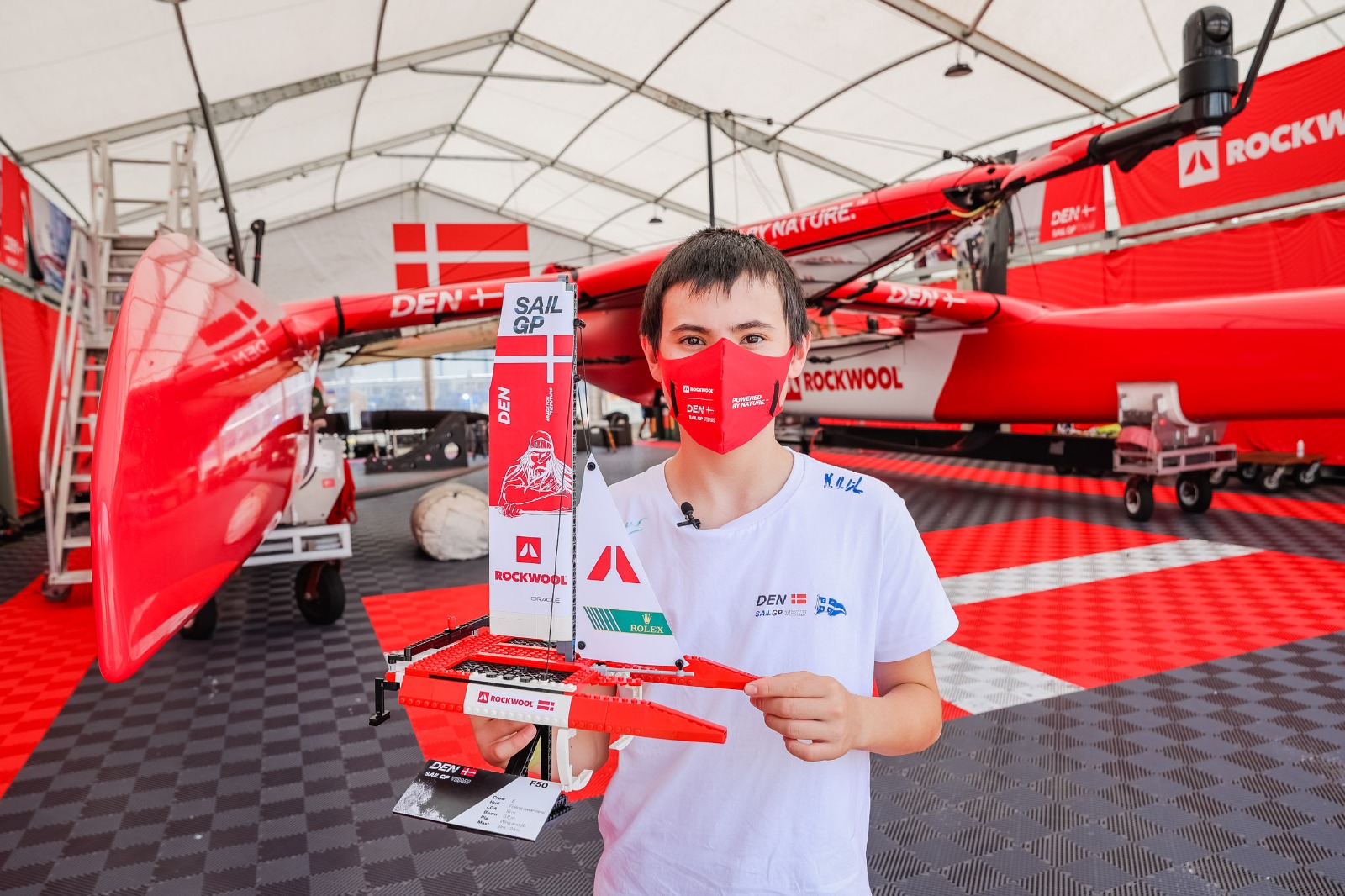Lego F50 SailGP Model
I sail at Connells Point Sailing Club in Sydney. In November 2021, we found out the club had been selected to be part of the Adopt-a-Club outreach program. This meant we needed to give Team Denmark a big welcome. Any Lego fanatic worth their salt knows that Denmark is the home of Lego, so I put up my hand to make a Lego model of the boat.
Here is how I made it!
There is a Lego CAD program called Studio which lets you choose from a pallete of bricks and build a model. You can choose from any brick ever made - which can be a problem trying to find the right one.
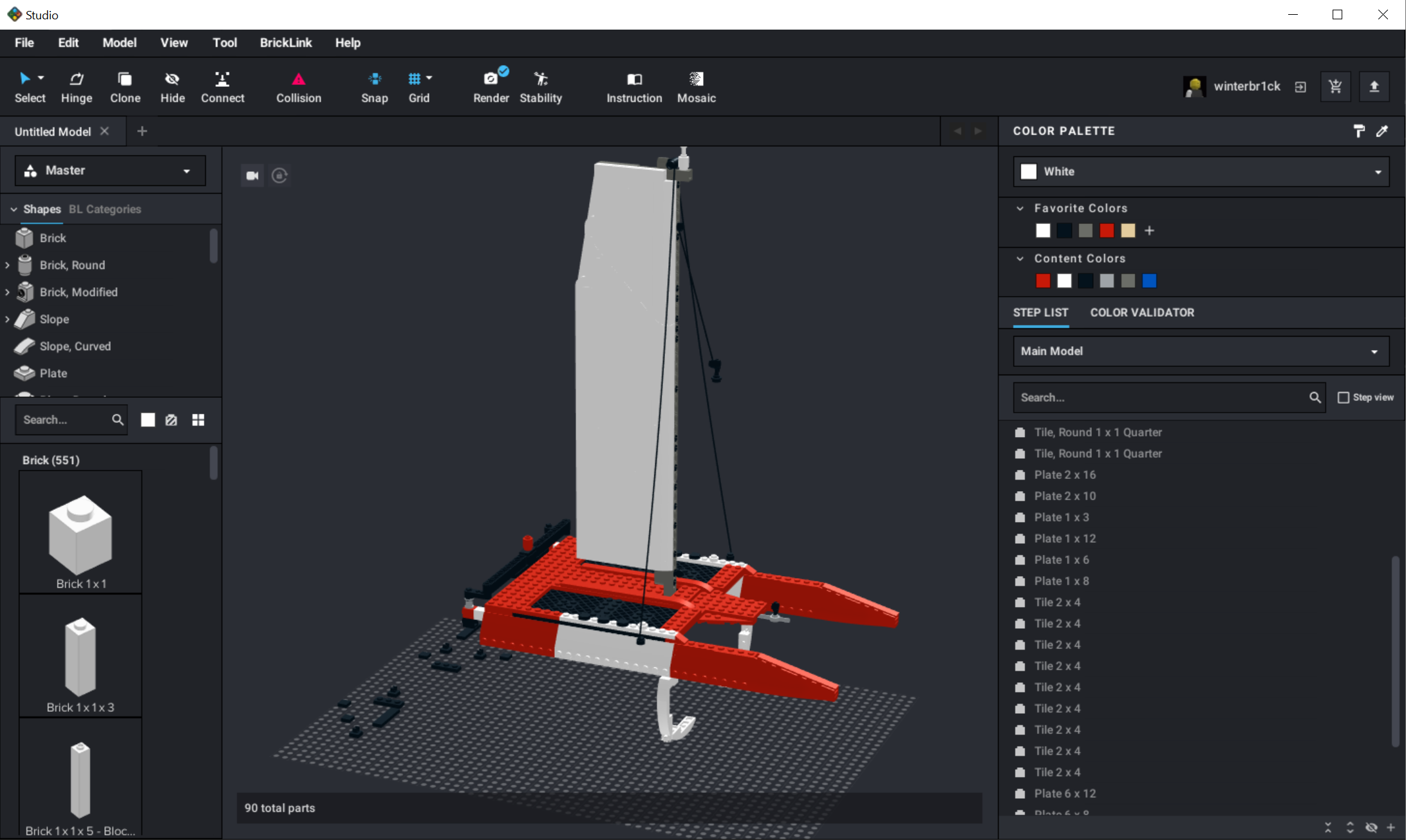
Before November, I’d never heard of these boats so after studying a lot of pictures and watching some YouTube videos, I built up the model in CAD. I have Lego Technic Catamaran 42105 which gave me some inspiration for how to model the mast.
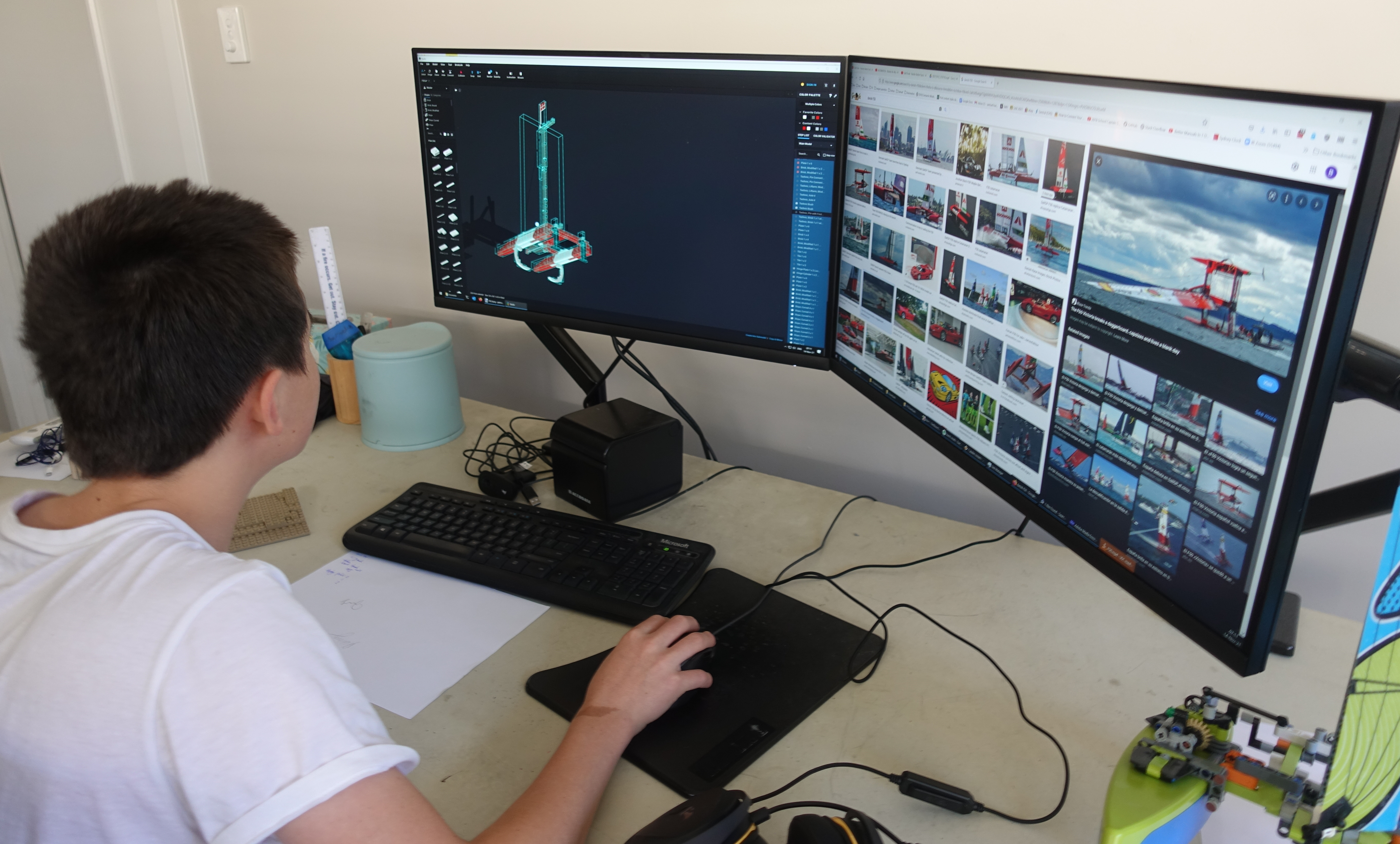
The neat thing about Studio is that you can render photo realistic images.
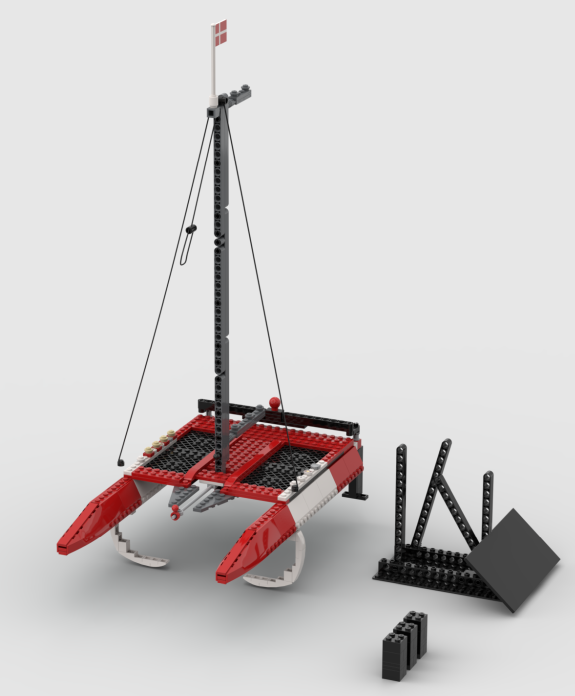
It was at this point that the club realised I have been building Lego a lot longer than I have been sailing.
Designing the sail was quite tricky until I found out it was a rigid wing that could be made out of layered plates.
After a lot of tuning and tweaking and with time running out, I exported the parts list to bricklink.com so I could order the pieces.
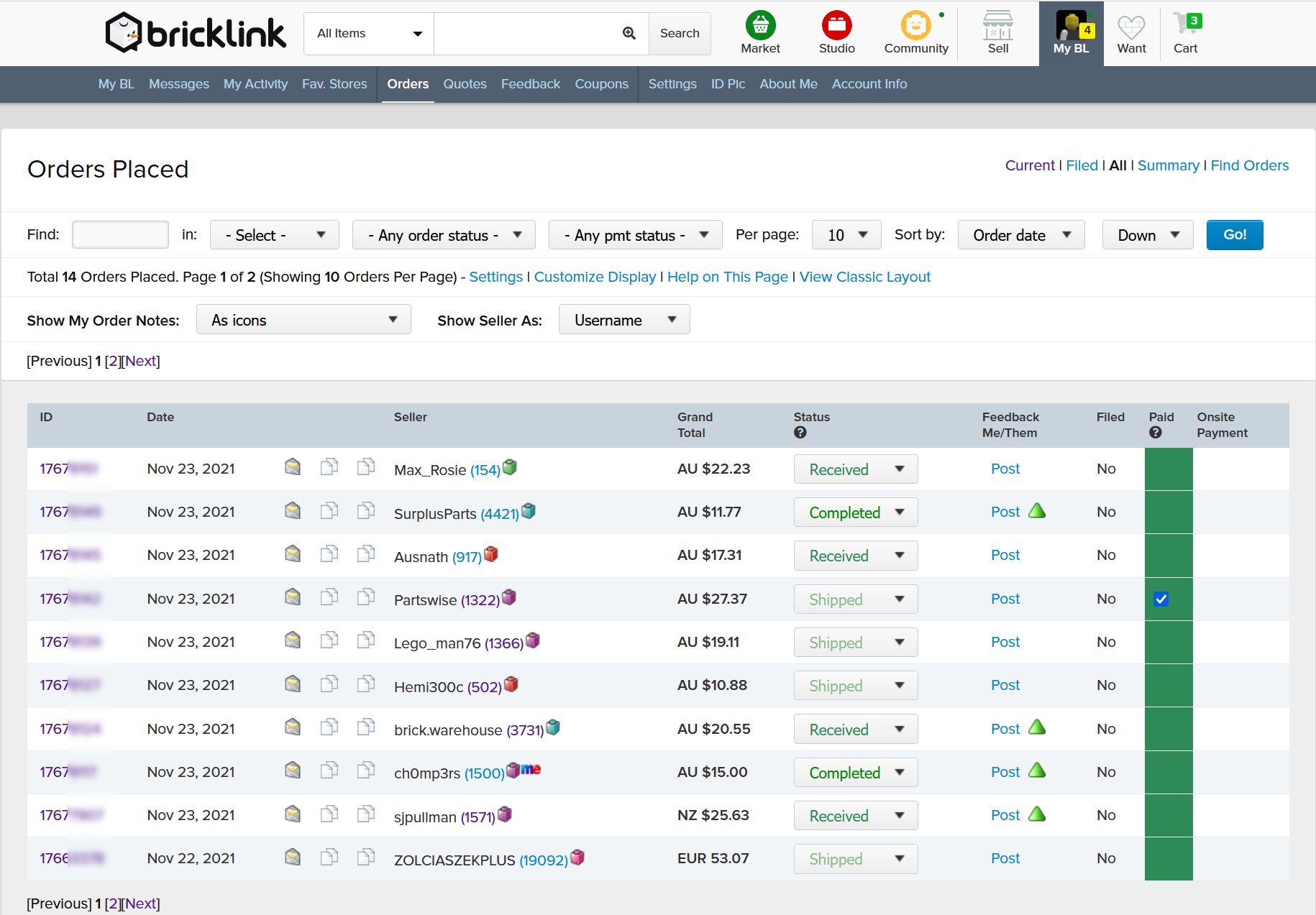
This is where it’s really important to choose the right parts in Studio because there are 1972 pieces that look almost exactly like 2021 pieces. Which is fine until bricklink tries to find the genuine 1972 parts! So after running through the parts list a few times, I found all the problem parts and resubmitted. Even still, the red 12 x 3 wedges for the bow was last produced in 2016 which makes them relatively rare.
Over the next few weeks, parts started to arrive but it wasn’t until the last few packages came that the build could properly start.
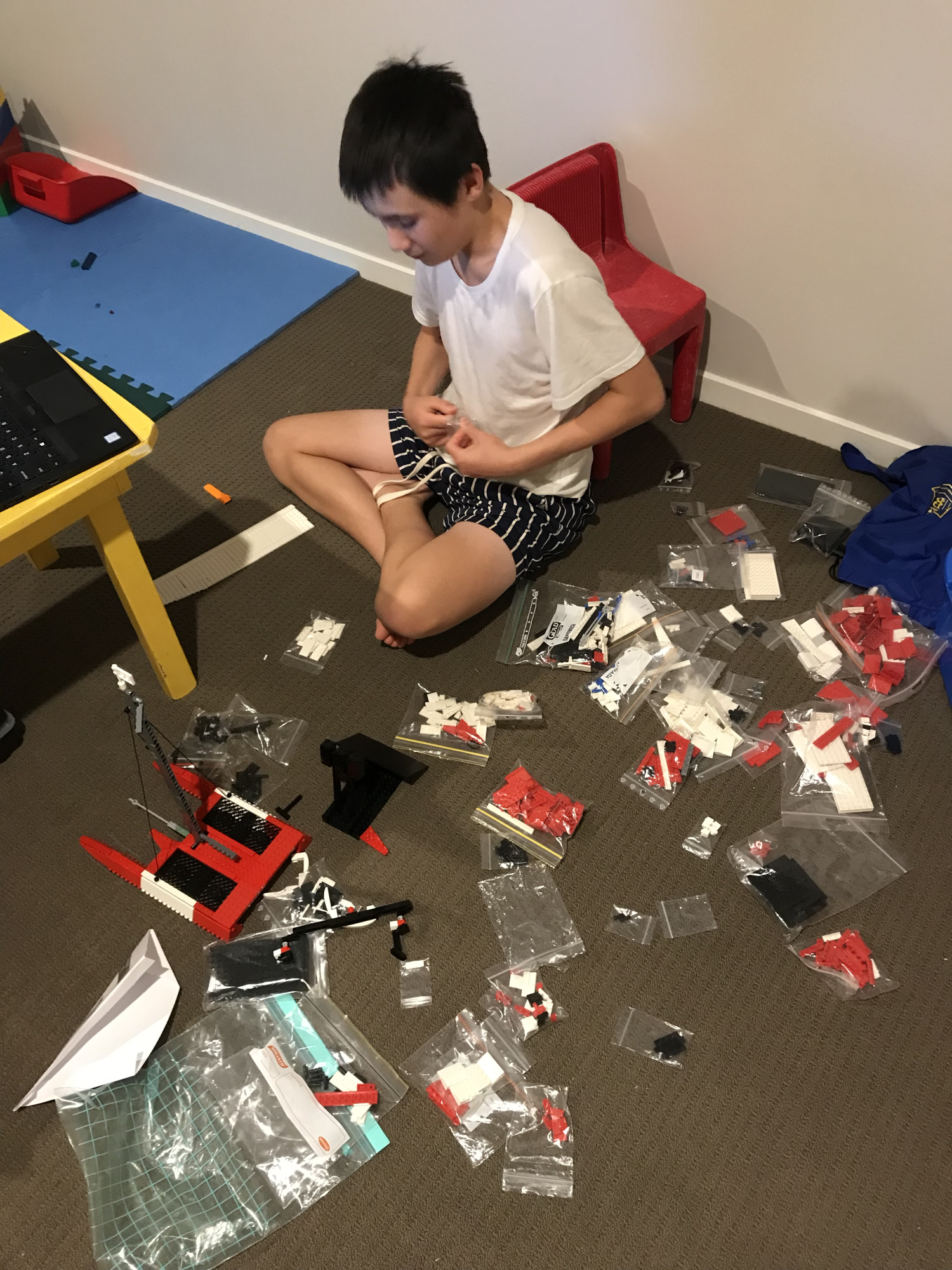
Since the design was all in Studio, it generates the instructions automatically which comes in handy. You still need to hand edit some instructions so they make sense though.
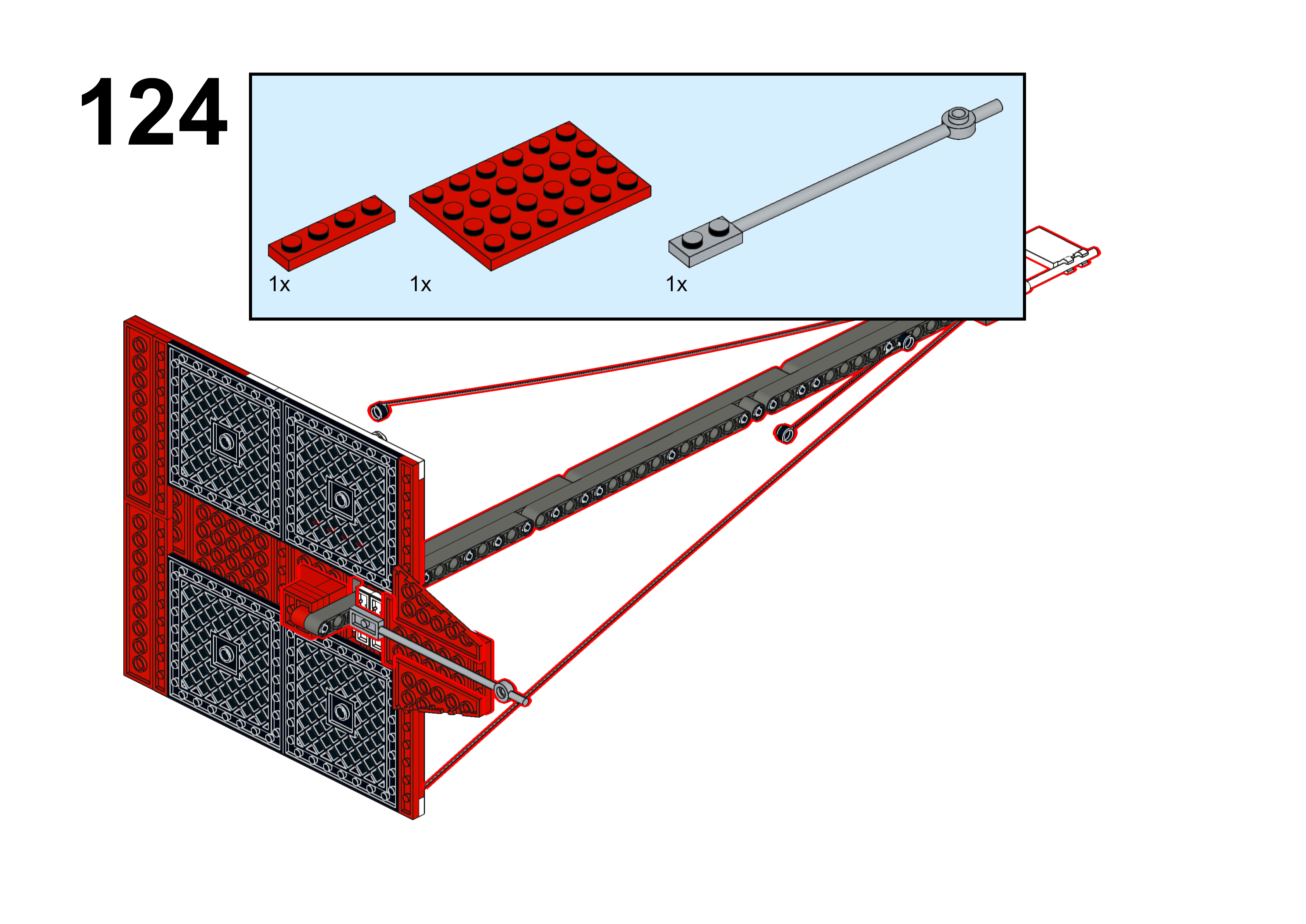
To give the boat some extra polish, it needed some decals. Normally these come ready made in Lego sets, no such luck with this model! Luckily Team Denmark sent our club files for the viking logo to make t-shirts to cheer them on. Creating the sail decals would have been really hard to do without those files. The other logos were found on the internet - apart from the Rolex on the jib which was recreated in Paint.NET.
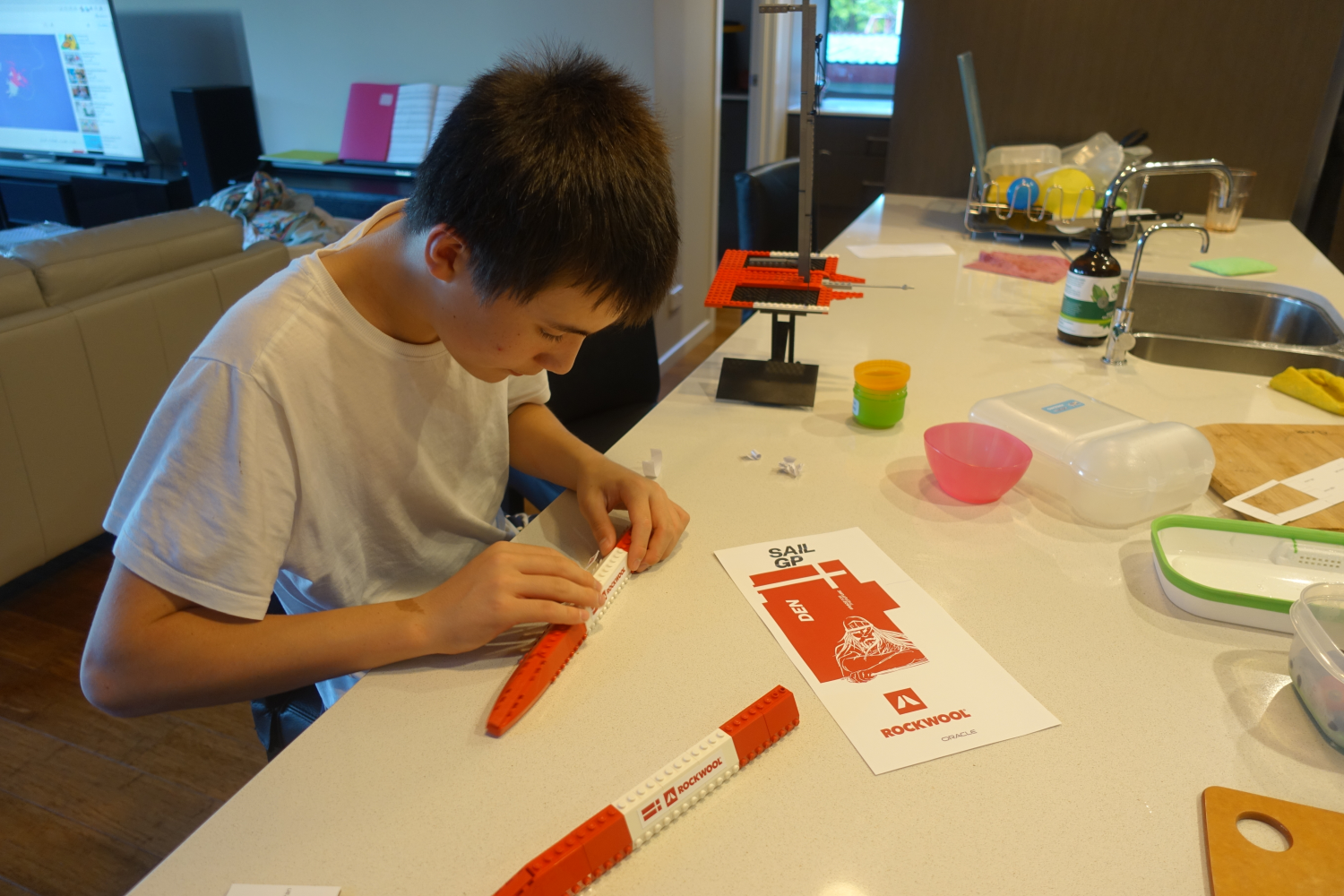
By now the model was coming together nicely.
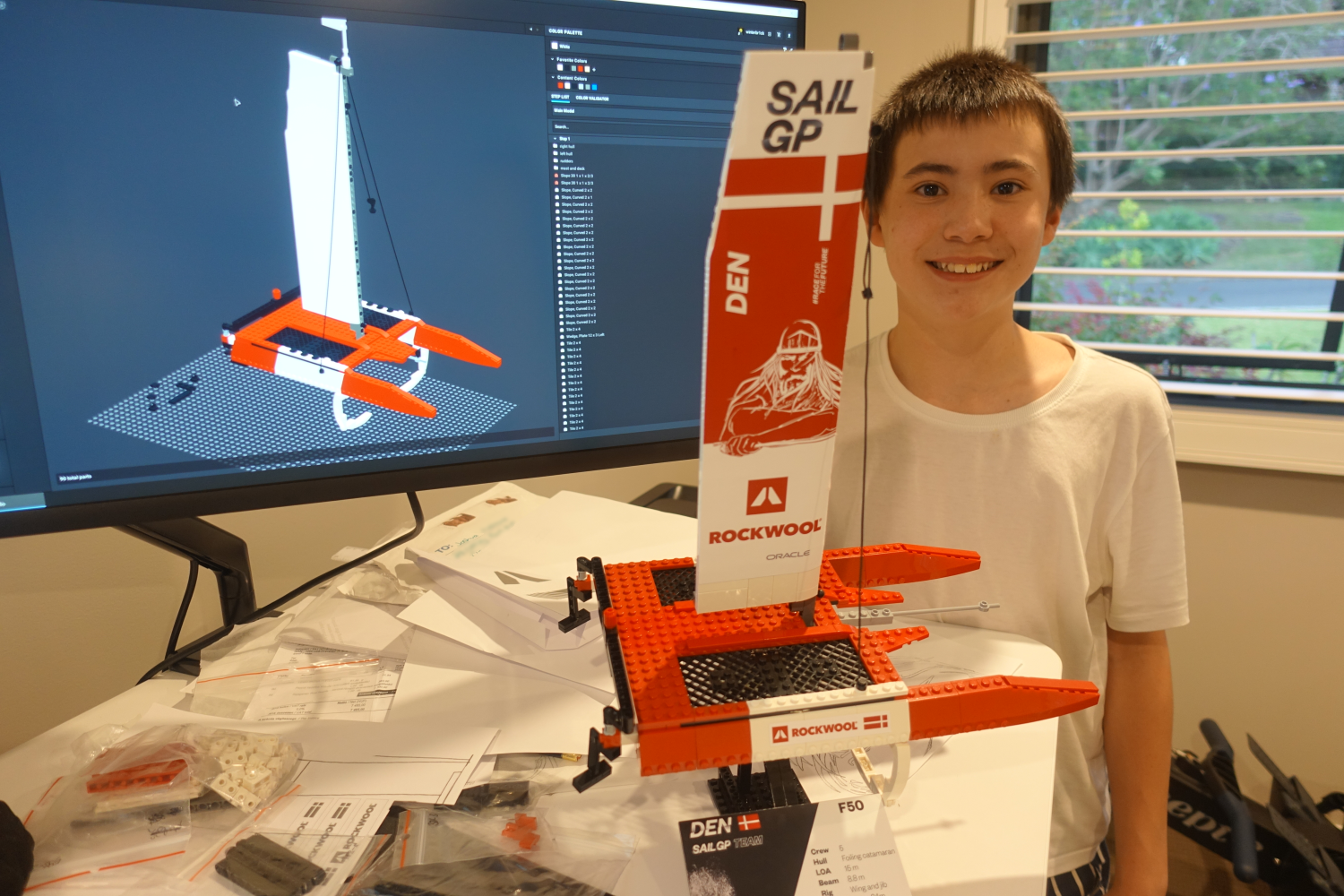
The last thing to do was the jib. Do you know the saying “measure twice, cut once”? In the case of the jib it was more like measure 3 times, cut 3 times.
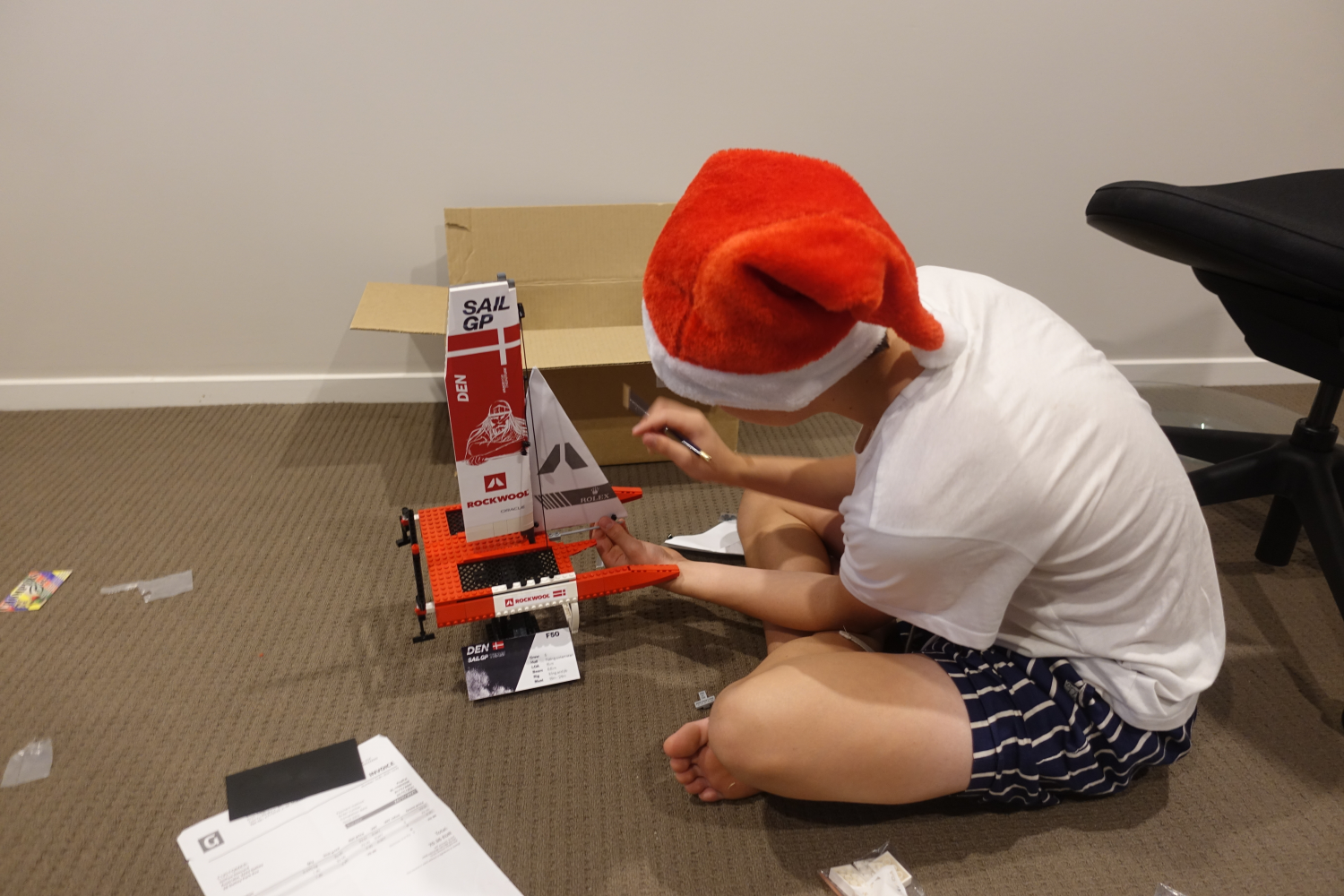

Just in time for Sydney SailGP weekend, the model was finished. It was a lot of work but I think it turned out really well!
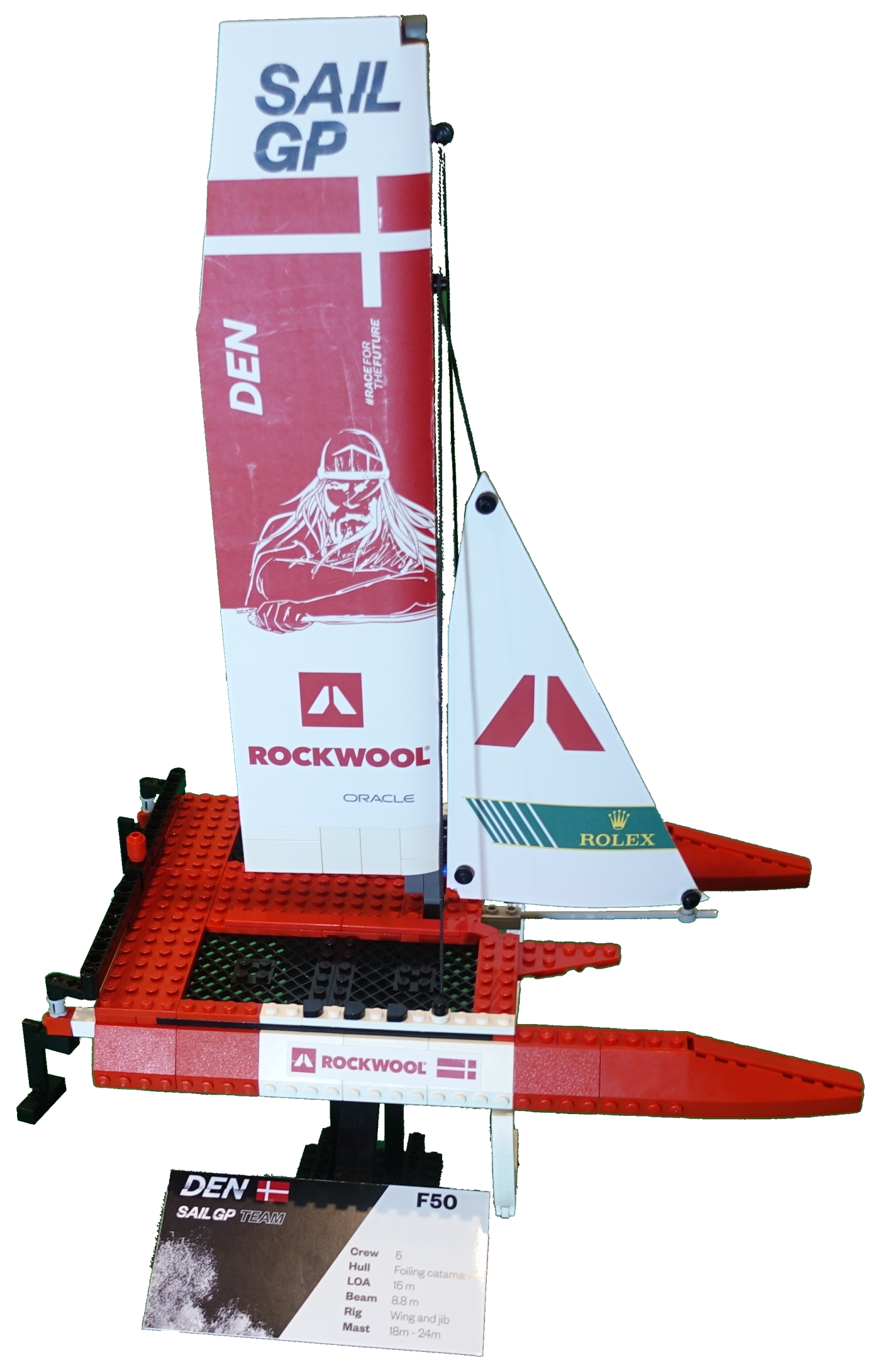
The final model is
- 368 parts
- 488 grams
- 42 cm high
- 30 cm long
- 20 cm wide
Update
Team Denmark really liked my model! 🤩🤩
